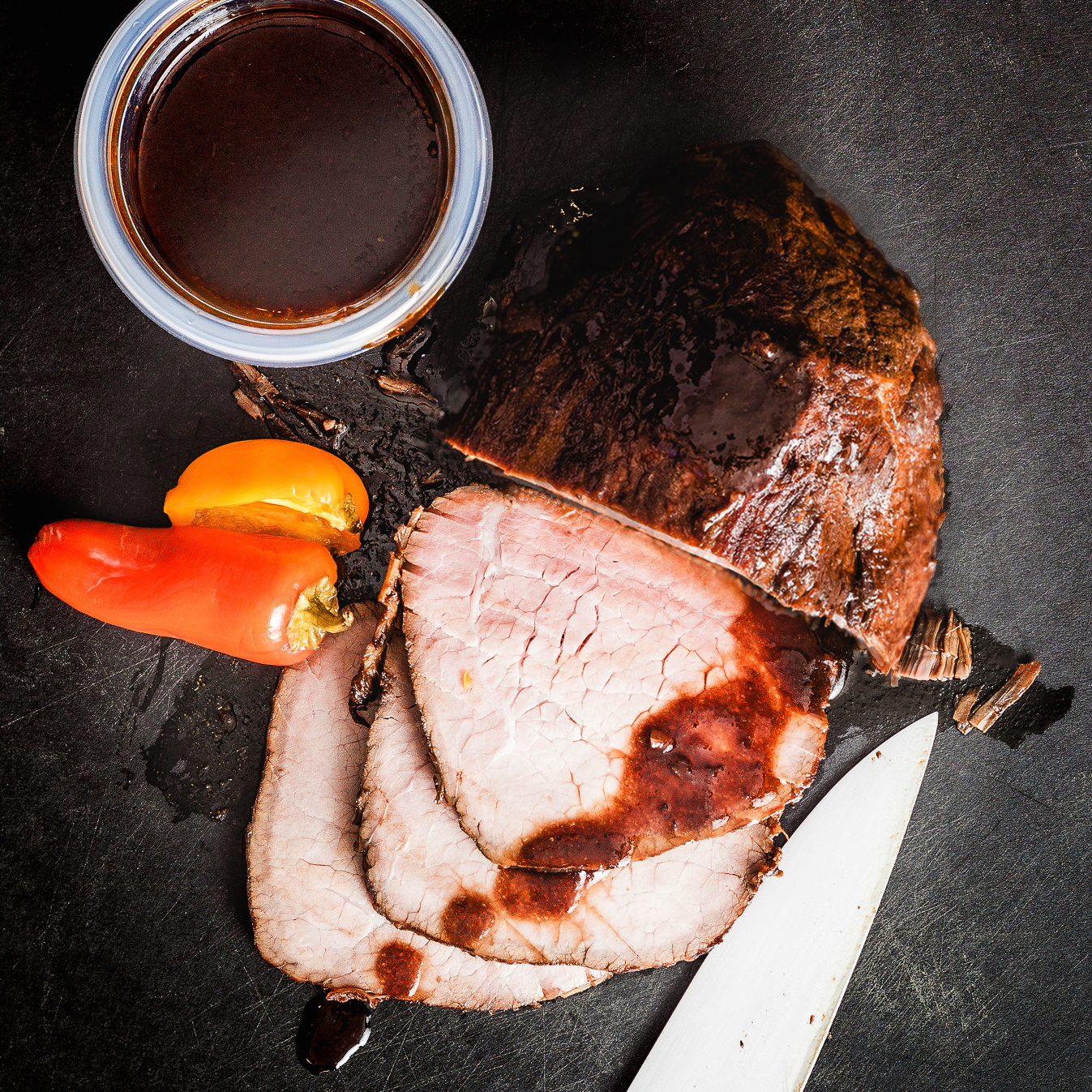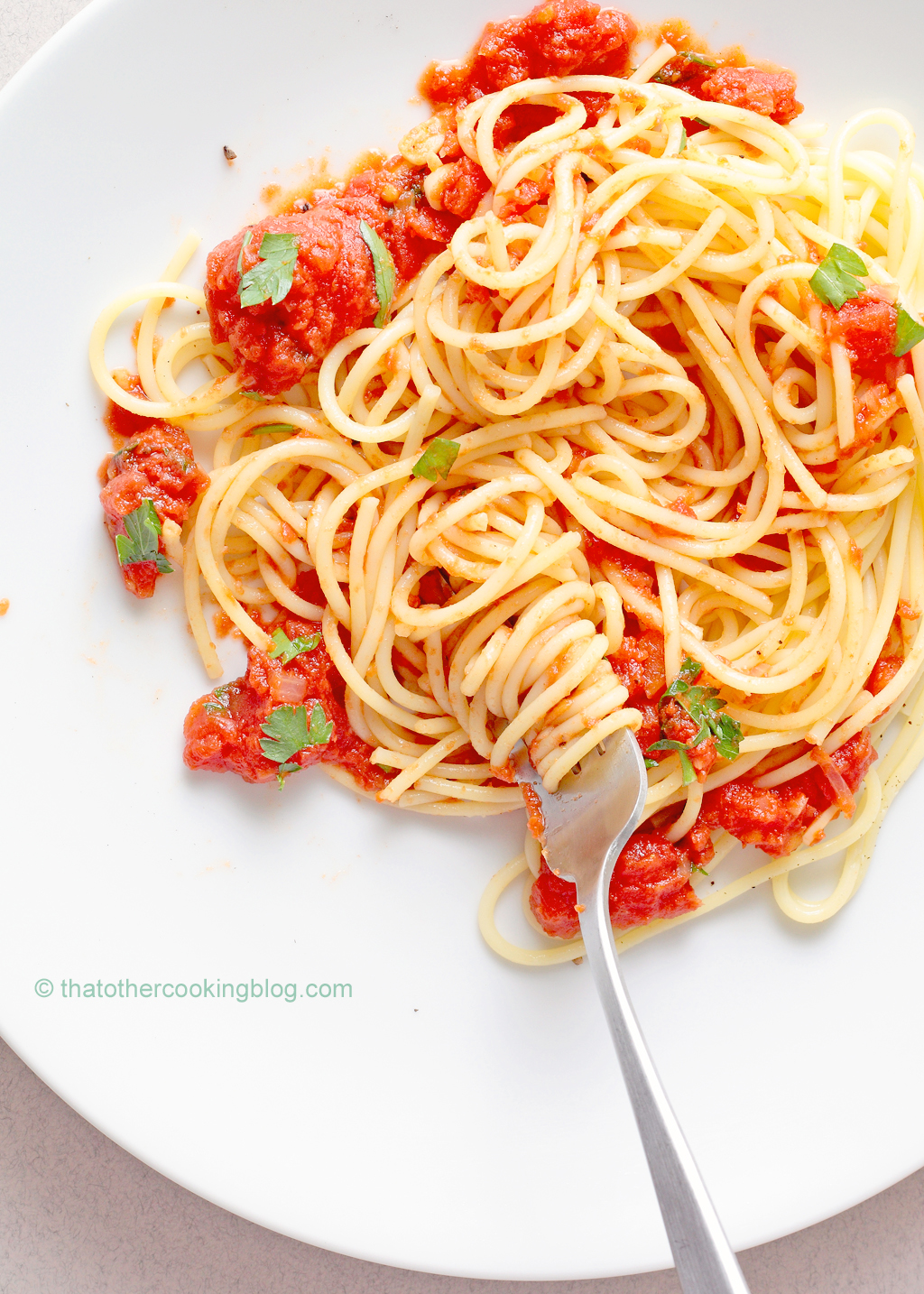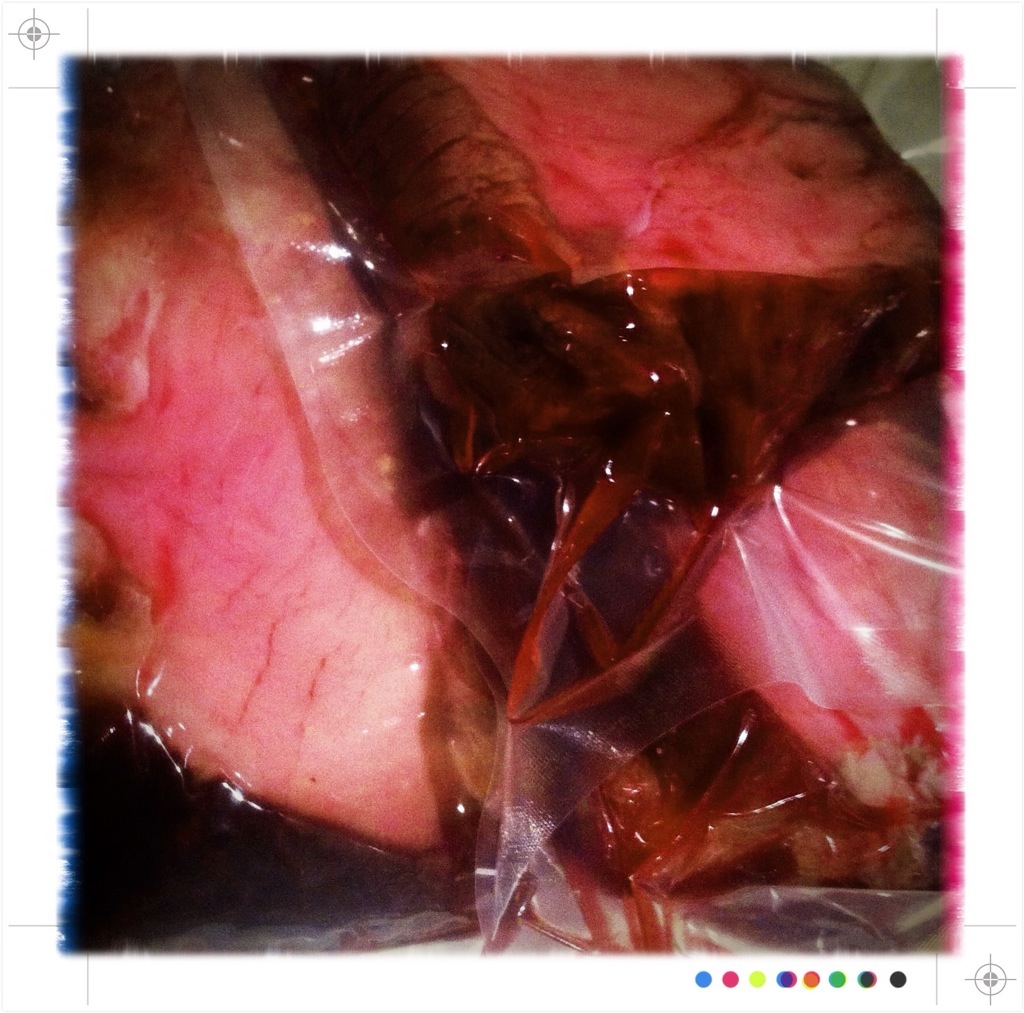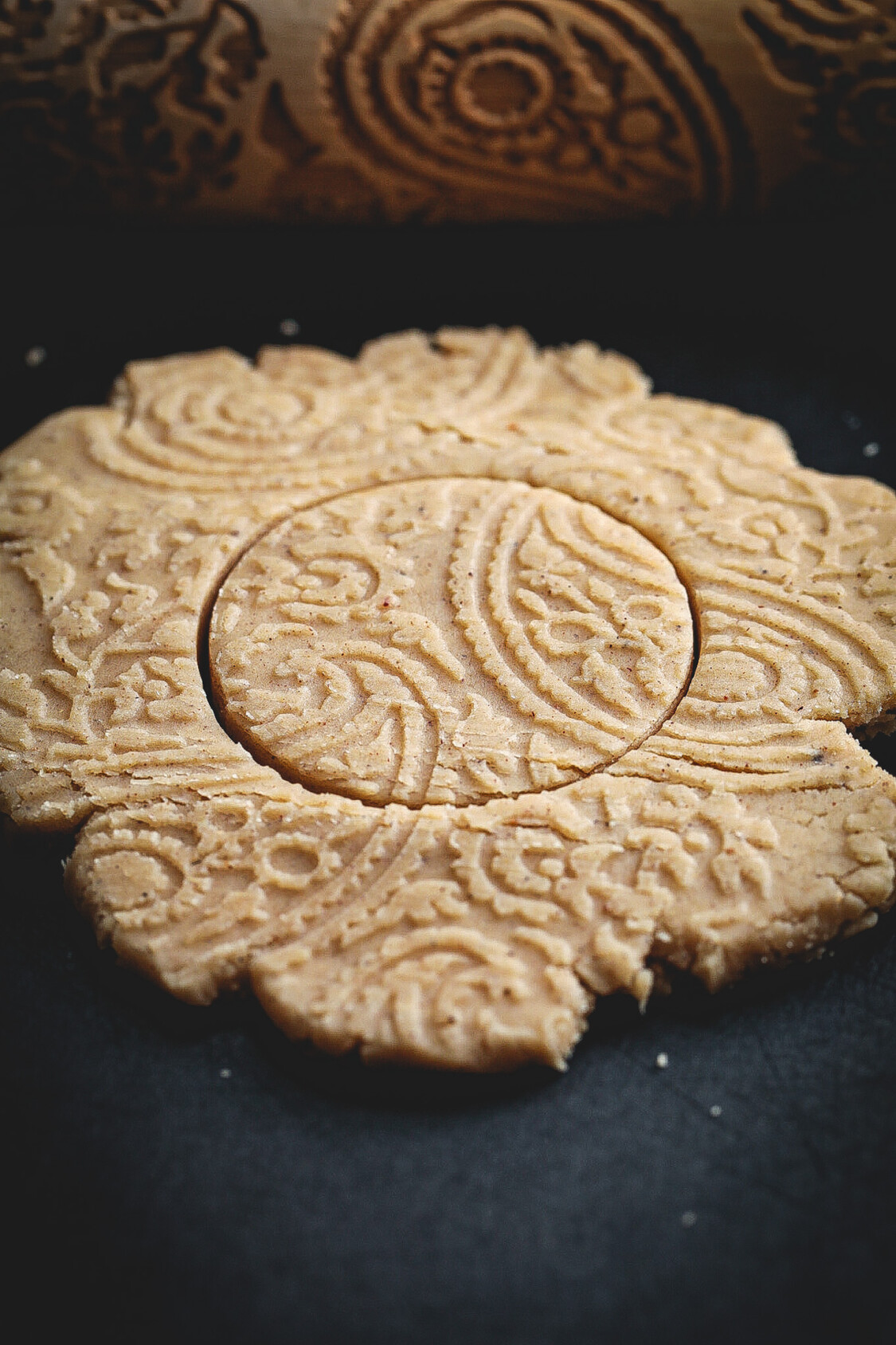I’ve always been more drawn to cooking things that take a longer time to make. There’s something really soothing and therapeutic about it not to mention the amplified feeling of accomplishment and the reward at the end of a long cook. Whether you’re slow cooking, sous vide’ing, BBQing, dry curing, aging or fermenting, time plays a critical factor in flavor development. There’s quite a bit of chemistry at work and we often don’t take advantage of time to improve on the flavors of the foods we love because we just don’t have the time. How often have we read or heard somebody say “this stew is awesome now but it’s gonna be so much better tomorrow”. Some food does tend to get better with age (I don’t think I need to point out that food will eventually go bad…). Traditional asado negro takes a few hours to make and it ages really well in the fridge overnight, even a few nights. The sous vide version can take up to 2 full days to cook and once you make it you’ll know what I’m talking about when I say amplified feeling of accomplishment and the reward that comes with it.

What is this asado negro?
Now, traditional asado negro (hmm… it would literally translate to black roast) is a traditional Christmas Venezuelan thing… A standard beef roast. Takes about 2-3 hours in the oven and what’s sort of unique about it is the use of a really well-developed gastrique sauce to coat the meat. This gastrique is made with papelón (raw sugar cane sugar) and vinegar plus whatever else your family tradition dictates which usually includes garlic and a basic mirepoix. Brown unrefined sugar is caramelized until it gets to a very deep brown color and then cut with an acid like white wine vinegar. It is then reduced until syrupy. Seasoned with salt and maybe pepper. Very intense stuff.
Tough cuts.
For the meat, the typical choice is muchacho redondo or eye of round. Eye of round has a great amount of connective tissue but it is very lean which makes it very prone to drying out. I’ve seen some recipes use pork shoulder instead but the more common preparations use beef. I think brisket would be a much better choice because of that nice fat cap but let’s stick to traditions this one time (goosebumps as I say that…).Because round eye is such a tough cut most of us have only had it well… technically overcooked if cooked traditionally… and perhaps smothered in sauce to fix the issue of dryness because traditional cooking doesn’t really have a practical way of dealing with tough lean cuts. Roasting is difficult and usually requires medium-well to well-done in order to break down the collagen. Braising is another approach (perhaps better)but that’s basically simmering the meat until it breaks down. You can minimize dryness by cooking it as gently as possible for as little as possible. It’s a difficult thing to do. Probably as hard as roasting a chicken well.
Let’s sous vide this thing.
Let’s now break away from tradition by cooking this roast with your sous vide cooker instead. Which makes the process more hands-free while giving us the ability to choose the desired doneness, something that is pretty much impossible any other way. Sous vide will also have a significant effect on the texture of the meat. It breaks down connective tissue without brute-forcing it and will give this meat a tender texture at the expense of time. For this recipe, we’re going for medium rare, perhaps closer to medium but still pretty rosy with a nice bite.
Ingredients (serves about 5 hungry people):
2 Tbsp safflower oil or vegetable oil.
7 Tbsp brown sugar (Regular sugar ok too but if you find papelón, USE it)
1 Tbsp molasses (if using papelón you won’t need this)
1/3 cup apple cider vinegar. (Or any sharp vinegar you like)
3 celery stalks. Medium dice.
2 medium carrots. Medium dice.
1 medium yellow or white onion. Small dice.
1 Tbsp tomato paste.
2 Tbsp soy sauce
1 Tbsp Worcestershire (hardest word to type ever) sauce
1 Tbsp molasses (if not using papelón but it’s optional)
6 garlic cloves. Mashes and minced.
3 lb eye of round (roughly).
Bring out your best searing pot.
I really like using my heavy enamel pot for this but any good pan should do. Add the oil and makes sure to let it heat up really well before adding the meat. If you have an infrared thermometer, the surface should be about 450-500 degrees F. Brown the meat on all sides. We’re looking for a nice dark crust so don’t be shy. To minimize oil spatter, dry the meat before searing with a kitchen or paper towel. Once browned, place the meat aside. This pot has been to hell and back btw.

Burn them onions.
I’m using the onions for color and bitterness so charring although not common is actually ok. Add the onions to the hot enamel pot and scrub the bottom of the pot to release any brown bits. Cook the onions until they’re pretty much black over medium-high heat. The bitterness of charred onions will get balanced by sugar and vinegar later.

The gastrique.
Add the Worcestershire and soy sauce to the pot. Add the rest of the vegetables and the tomato paste and cook until golden brown over medium heat. Now add the sugar and keep stirring. The caramel will become darker and darker. Cook until it has a rich dark golden color. It will take about 10 to 15 minutes. Add the garlic, cook for a minute or so. Add the molasses, keep stirring. Finally, add the vinegar and reduce the mixture until it becomes syrupy. Taste and add additional soy sauce or salt if necessary. Go a bit salty.

The easy part.
Wait for the sauce to cool down a bit. You need to pour the sauce into the bag and we don’t want to melt the bag. Place the meat in a large ziplock bag and add the sauce as well. Sous vide at 50C for 48 hours. If you can cover your sous vide container do it so you don’t have to worry as much about having to add extra water. If you don’t have a lid, use some tin foil.

Once cooked.
Remove the meat from the baggie and rinse to remove any veggie bits that might be stuck on it. Place the meat aside. The meat has given quite a bit of liquid that needs reduction. Strain the liquid into a wide pan over medium-high heat. Reduce until the consistency is back to syrupy. This is a great opportunity to correct the seasoning if necessary. I also suggest straining the sauce a second time to really make sure you end up with a velvety finish.
A note on using papelón.
This ingredient usually comes in the form of a panela. It’s like an adobe or brick. It’s super hard and you’re gonna have to grate it and it won’t be easy. I usually use a chef knife to do this but maybe a box grater is the way to go. If using papelón, you don’t have to use molasses necessarily but up to you. That’s a preference thing at that point.
Wanna get more sous-vide cooking guides and cool cooking how-to’s in your mailbox? You know what needs to be done!
We never spam. You should only be getting updates when new content is posted on the site. We also respect your privacy. We don’t share your email address with anyone and you can unsubscribe anytime!







4 comments
beautiful. I’ve never thought an eye of round appealing, but now I know I can sous vide it! Of course I can, but I get the utmost please with the sous vide outcome of flank steak, brisket, and so forth. the most “inferior” cuts of meat. Love this dish. And your pot.
thanks Mimi! Yeah… I definitely changed my stance on tough cuts after I started cooking sous vide too. Specially short ribs… I haven’t found a better sous vide application than this. It takes forever but it’s worth every second. Isn’t that le creuset pot the coolest thing ever? 🙂
Agreed about eye of round. SV is he best way to go with it. It is my favorite to make “roast” beef for cold deli-style sandwiches. I usually do 60C for 5 or 6 hours.
I’m gonna try that and compare juiciness. Should be about the same but maybe you the faster cook improves on that